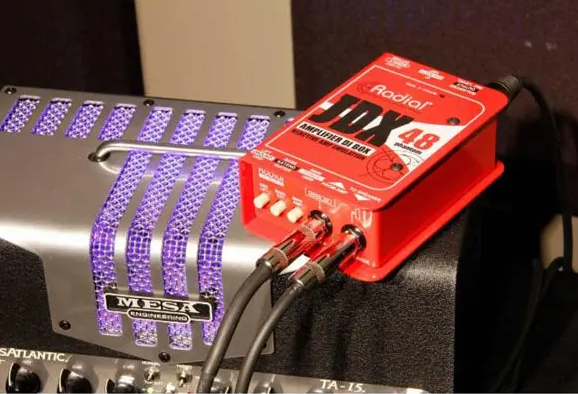Hi Jonah:
What’s the deal with tube DIs like the Groove Tubes Ditto? I have an active pickup in my acoustic guitar and I never know what kind of DI to use. – Peter Bailey
Ah yes, the old DI (direct input box) conundrum. Here’s the skinny: All DIs fall into two categories: active and passive.
Passive DIs provide complete signal isolation due to their transformer and can operate without a power source. Active DIs need power (generally either phantom or batteries), can supply gain to the signal, and can have an extremely high input impedance, which is a must for certain sources such as piezos.
Both types can handle the important tasks of balancing a signal and better matching (technically “bridging”) the impedance between the source and the mic preamp.
When choosing, consider whether the specific application requires full isolation and/or gain, but you will be well served by the general rule of using active DIs on passive sources and passive DIs on active sources. This practice will help you keep you maximize SNR (signal-to-noise ratio) while reducing extra gain stages.
So what’s all this ado about tubes? At least one manufacturer of tube DIs states that the tubes are used to achieve much higher input impedances. This works, but a tube is not the only way to achieve a high-input Z. An FET (field effect transistor) can work just as well – for example, the classic Countryman Type 85 achieves a 10 Megaohm input Z using an FET input stage, so the tube isn’t the only way to skin this cat.
However, I’d wager that tube DIs are usually chosen for artistic purposes. A DI is often used in place of an instrument amplifier, and since the amp itself contributes to the sound of the instrument, a plain ol’ DI’d bass or guitar can sound a bit odd.
Tubes are a good way to add back some of the natural distortion which is part of the characteristic sound of the guitar amp. This subtle distortion is part of why some people still prefer vinyl and analog tape. I scanned through a bunch of online reviews for popular tube DIs, and virtually all of them included the word “warmth.”
At the end of the day, some musicians opt for a tube DI simply because they like the way it sounds. As an engineer, I discuss this with artists before making any changes to their carefully sculpted tone once their signal is in my custody.
But because in this case you’re the one playing the guitar, my advice is to head to your local music shop and arrange for a test drive to see if the tube sound is a good fit for the tone you’re looking to achieve. If I were mixing you, as long as your acoustic’s active pickup is putting out a healthy level, I’d start with a well-made passive DI.















